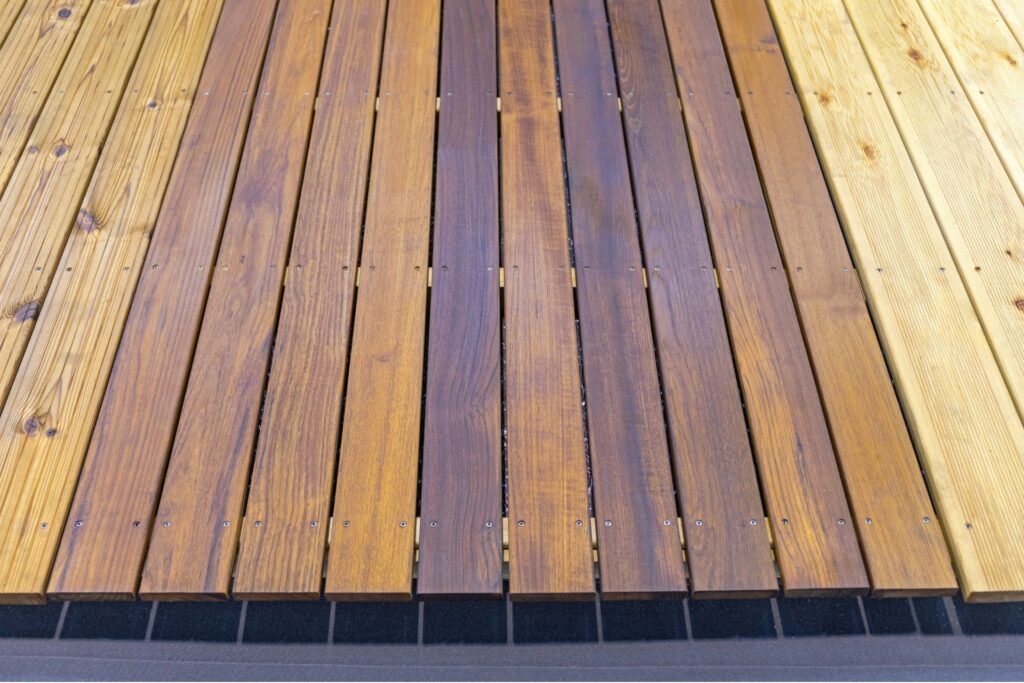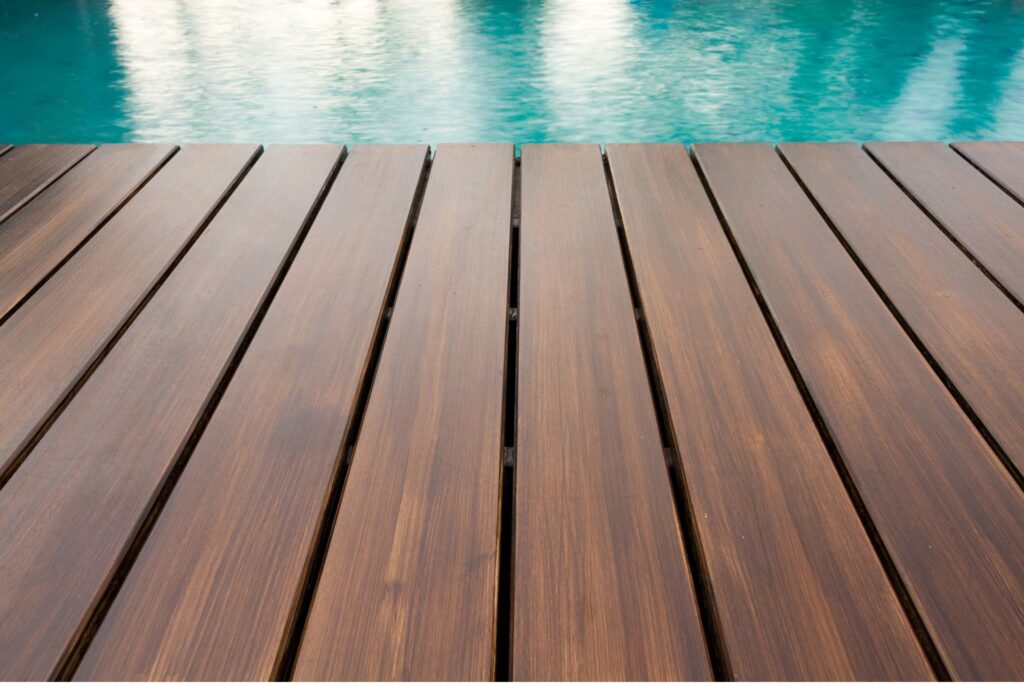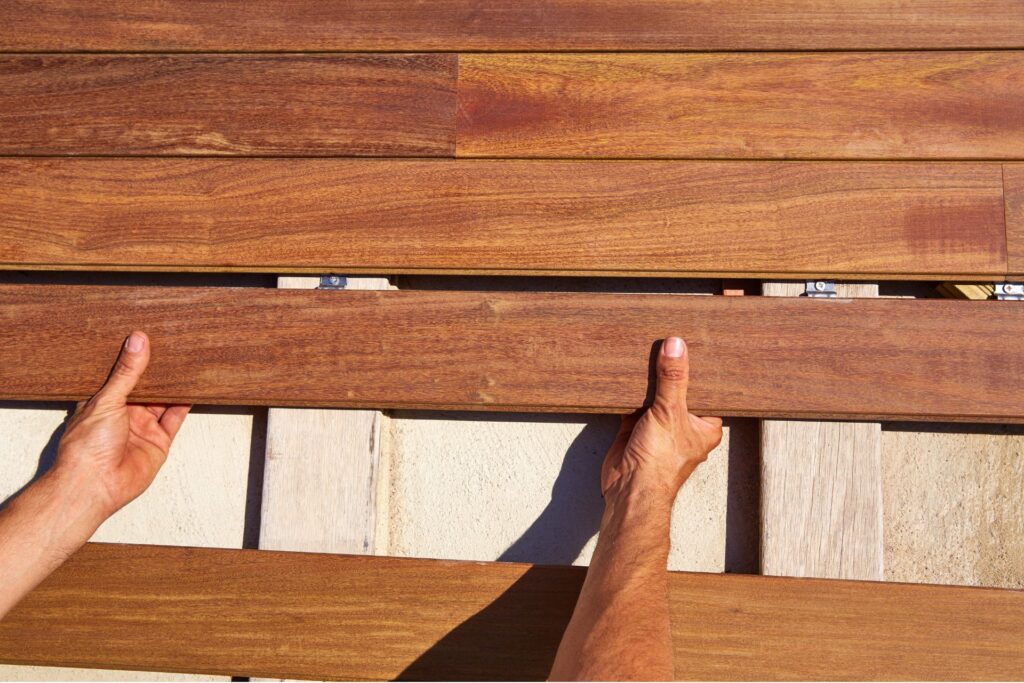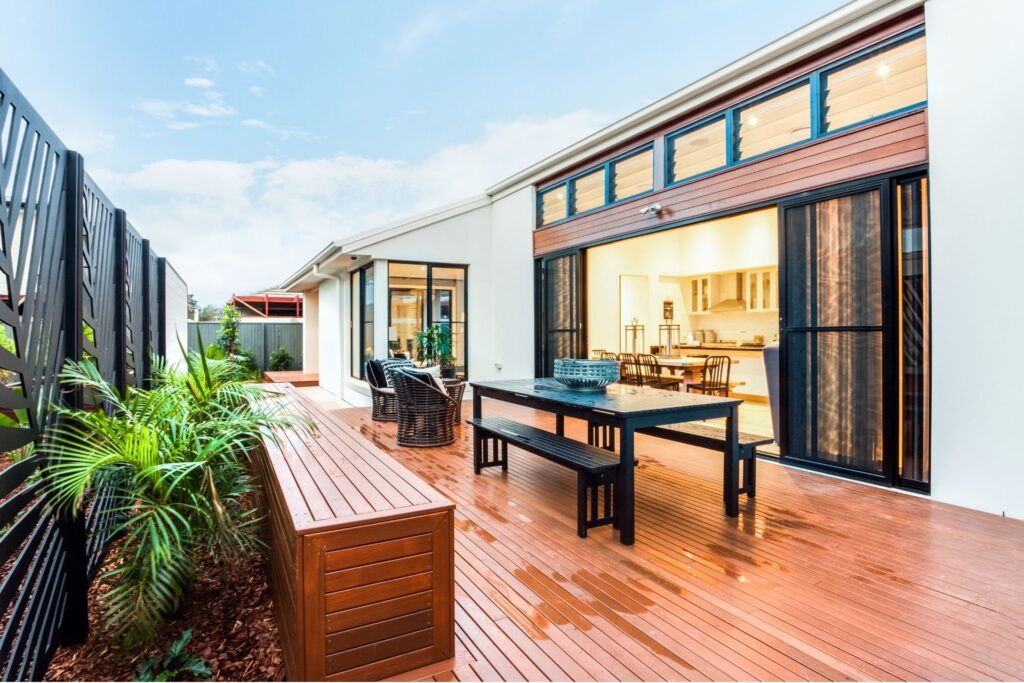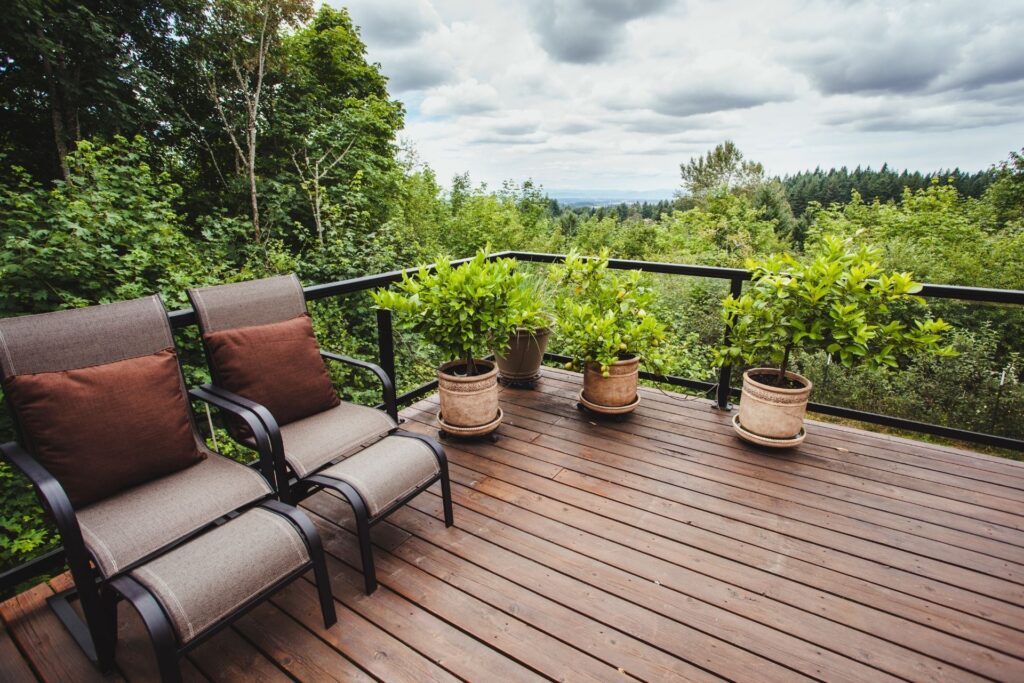Welcome to our comprehensive guide on composite decking prices in Australia, a top choice for enhancing outdoor living spaces with its blend of durability, aesthetic appeal, and low maintenance. As homeowners seek sustainable and long-lasting materials for their decks, composite decking has surged in popularity, offering a compelling alternative to traditional wood decking. This blog post is designed to walk you through everything you need to know about the costs associated with composite decking, from basic material prices to installation fees and cost comparisons between composite and wood options. Whether you’re planning a new deck or considering upgrading your existing one, we’re here to provide valuable insights to help you make an informed decision.
On average, the cost of composite decking in Australia ranges from $100 to $350 per square meter, including both materials and installation. This price can vary based on factors such as the quality of materials, brand reputation, and the complexity of the deck design. Our guide delves into these cost determinants and provides insights on how to select the right composite decking that fits your budget and style preferences while offering lasting value for your outdoor living space.
- What Is Composite Decking?
- Factors Influencing The Cost Of Composite Decking
- Average Prices Of Composite Decking In Australia
- Installation Costs For Composite Decking
- Cost Comparison: Composite Vs. Wood Decking
- How To Choose The Right Composite Decking
- Money-Saving Tips For Buying And Installing Composite Decking
- Future Trends In Composite Decking Prices
- FAQs: About Composite Decking Prices Australia
- Conclusion
What Is Composite Decking?
Composite decking is a modern alternative to traditional wood decking that has gained popularity among homeowners and builders alike. Unlike wood decking, composite decking is manufactured from a blend of materials that typically includes recycled plastics and wood fibers. This unique composition not only contributes to its durability but also to its eco-friendliness, making it a preferred choice for environmentally conscious consumers.
Understanding the Materials Used in Composite Decking
The core materials used in composite decking are what set it apart from other decking options. Composite decks are primarily made from recycled plastics, such as polyethylene or polyvinyl chloride, and wood fibers, which can include sawdust, wood chips, or wood fiber pieces. The combination of these materials is engineered to maximize the strengths and minimize the weaknesses of each component.
Benefits of Choosing Composite Decking
Choosing composite decking offers several advantages over traditional wood and other decking materials. Here are some of the key benefits:
1. Durability and Longevity: Composite decking is highly durable and resistant to fading, staining, scratching, and mold. This makes it an ideal choice for areas with heavy foot traffic or adverse weather conditions. Unlike wood, it does not warp, crack, or splinter over time, which significantly extends its lifespan.
2. Low Maintenance: One of the most appealing features of composite decking is its low maintenance requirements. Unlike wood, which needs to be regularly treated and stained, composite decking requires only occasional cleaning with soap and water. This ease of maintenance can save time and money over the life of the deck.
3. Aesthetic Appeal: Composite decking comes in a variety of colors and textures that mimic the look of natural wood. This versatility allows homeowners to choose a style that closely matches their home’s exterior design and personal aesthetic preferences.
4. Eco-Friendly: Since composite decking is made from recycled materials, it is an environmentally friendly option. The use of recycled plastics and wood fibers reduces the amount of waste sent to landfills and decreases the need for new materials from trees and petroleum products.
5. Value Addition: Although the initial cost of composite decking might be higher than that of traditional wood, the long-term savings on maintenance, coupled with its durability and aesthetic appeal, can enhance the overall value of your property.
In conclusion, composite decking offers a durable, low-maintenance, and sustainable alternative to traditional wood decking. With its variety of aesthetic options and eco-friendly materials, it is an excellent choice for those looking to enhance their outdoor living spaces while contributing to environmental sustainability. Whether you are building a new deck or replacing an old one, composite decking provides a robust, attractive, and practical solution.
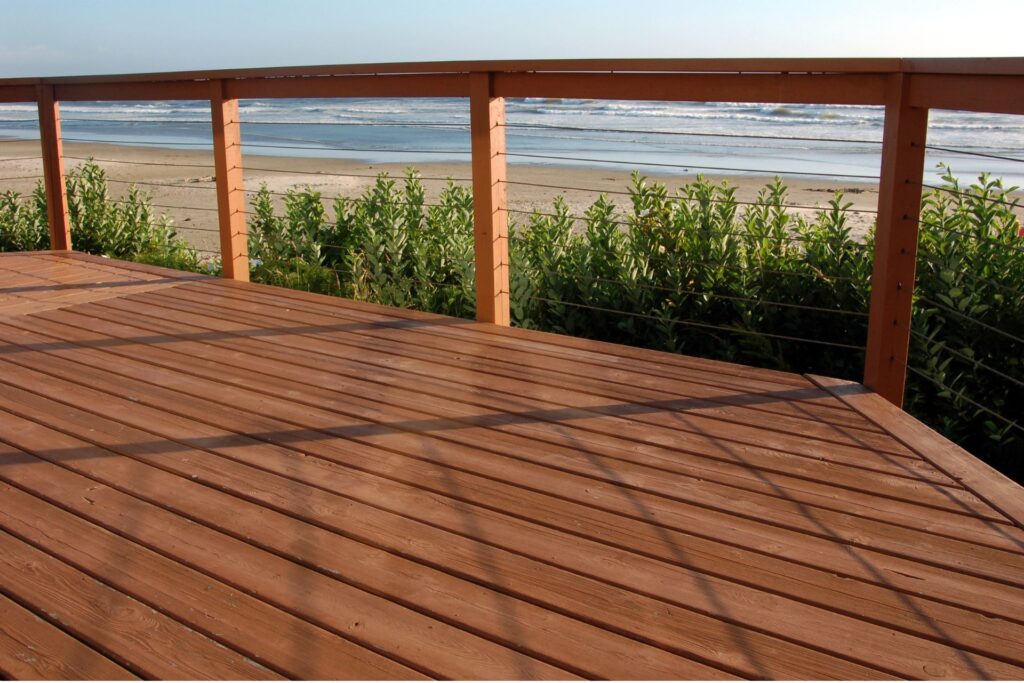
Factors Influencing The Cost Of Composite Decking
When planning a new deck, many homeowners and contractors choose composite materials for their durability and aesthetic appeal. However, the cost of composite decking can vary widely, depending on several factors. Let’s explore these factors in detail to help you budget effectively for your project.
Quality of Materials
The cost of composite decking is significantly influenced by the quality of materials used. Composite decking is made from a blend of wood fibers and plastics, and the ratio of these materials can affect both the performance and price of the boards. High-quality composites contain a higher percentage of plastic, which enhances their durability and resistance to the elements. These premium materials tend to be more expensive, but they also offer greater longevity and lower maintenance costs over time. Conversely, lower-grade composites might be more affordable upfront but could incur higher maintenance costs and have a shorter lifespan.
Brand Reputation
In the Australian market, several well-known brands are synonymous with quality in composite decking. Brands like Trex, ModWood, and TimberTech are popular choices among homeowners for their proven track record in quality and customer satisfaction. Each brand offers different grades of products at varying price points. Typically, well-established brands charge a premium due to their market reputation, rigorous quality testing, and extensive warranties. When choosing a brand, consider their offerings in terms of both cost and the specific needs of your decking project.
Size and Complexity of the Deck
The overall size and complexity of your deck design also play crucial roles in determining the cost. Larger decks require more materials, which directly increases the expense. Additionally, intricate designs featuring multiple levels, curves, and angles require more time and labor to construct, which can further increase the project’s cost. Simple, rectangular decks are generally the most cost-effective options, while unique or complex designs are more labor-intensive and thus more expensive.
Additional Features
Finally, optional features such as railings, stairs, and special finishes can significantly impact the total cost of a composite decking project. For instance, adding railings for safety or aesthetic reasons increases material needs and labor time. Stairs, which are essential for multi-level decks, also add to the complexity and cost. Special finishes or textures, designed to mimic the look of natural wood or provide extra slip resistance, can elevate the aesthetics of your deck but will also add to the cost.
Understanding these factors will help you make informed decisions when budgeting for a composite decking project. Whether you prioritize durability, brand reputation, or specific design elements, each choice affects the overall cost and quality of your final deck.
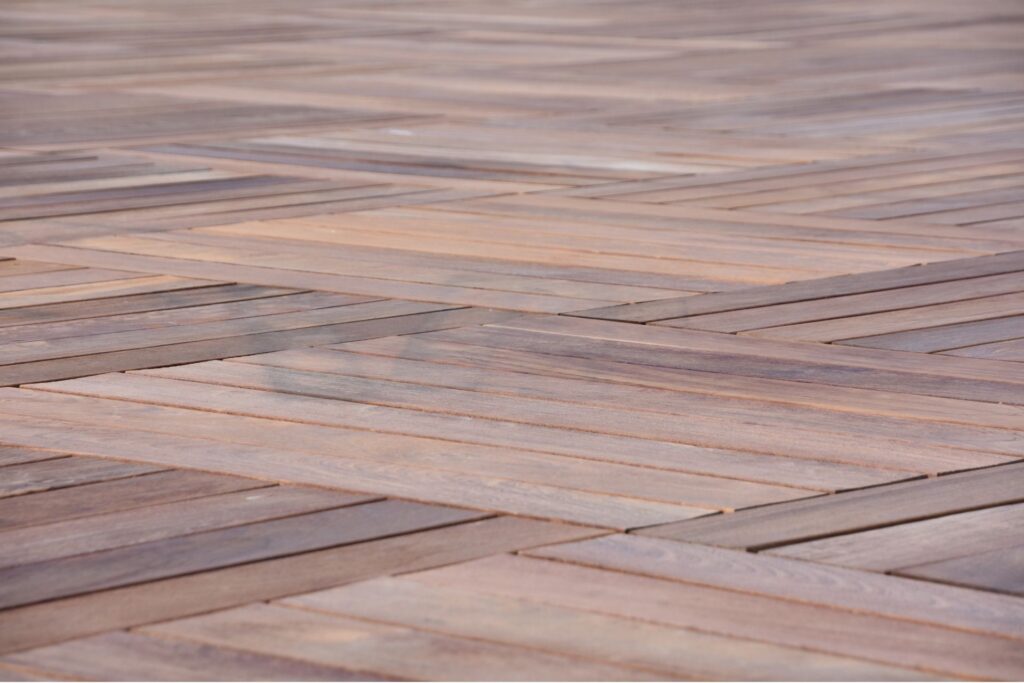
Average Prices Of Composite Decking In Australia
When considering upgrading your outdoor spaces, composite decking is an attractive and durable option popular among Australian homeowners. Its appeal lies in its long-lasting nature and minimal maintenance requirements compared to traditional wood decking. However, the cost can vary significantly based on factors like brand, quality, and location within Australia. This guide aims to provide you with detailed information on the current prices of composite decking across Australia, helping you make an informed decision based on your budget and preferences.
Price Range Based on Brands and Quality
Composite decking prices in Australia are influenced by the quality of the materials and the brand reputation. Generally, you can expect to pay anywhere from $100 to $350 per square meter. To give you a clearer picture, let’s break down the costs by quality levels:
Basic Quality: For those on a budget, basic composite decking options are available, typically starting from around $100 to $150 per square meter. These options are durable and offer the essential benefits of composite decking, though the range of styles and colors may be more limited.
Mid-Range Quality: A step up in quality brings enhanced aesthetics and additional features such as increased UV protection and better stain resistance. Prices for mid-range composite decking vary from $150 to $250 per square meter.
Premium Quality: At the top end of the market, premium composite decking features the highest quality materials with advanced technology for color retention, maximum durability, and extra features like anti-slip surfaces. These options can cost anywhere from $250 to $350 per square meter.
It’s worth noting that these prices are indicative and can vary depending on the retailer, the specific product lines, and ongoing promotions.
Regional Price Variations Within Australia
The cost of composite decking can also vary regionally across Australia. Factors such as local demand, availability of materials, and even the cost of living in different areas can affect prices. Here are some insights into how prices might vary:
Urban Areas (Sydney, Melbourne, Brisbane): Prices in these metropolitan areas tend to be higher due to the higher cost of living and increased demand for high-end composite decking products. Installation costs in these areas can also be higher due to labor costs.
Rural and Remote Areas: In contrast, prices in rural or remote areas can be lower or, in some cases, higher due to the additional transport costs for materials. It’s advisable to check with local suppliers for the most accurate pricing in these regions.
Western Australia and Northern Territory: Due to their remoteness and fewer suppliers, prices in these regions might be higher compared to the eastern states.
To get the best value for money, it’s recommended to request quotes from several suppliers and compare the costs along with the features offered by different brands and products. This approach not only ensures that you get the best price but also helps in finding the product that best suits your specific needs and aesthetic preferences.
In conclusion, while composite decking is a cost-effective and durable option for Australian homeowners, prices vary based on quality, brand, and location. By understanding these factors, you can better navigate the market and choose a decking solution that offers the best balance of cost, quality, and longevity for your outdoor living space.
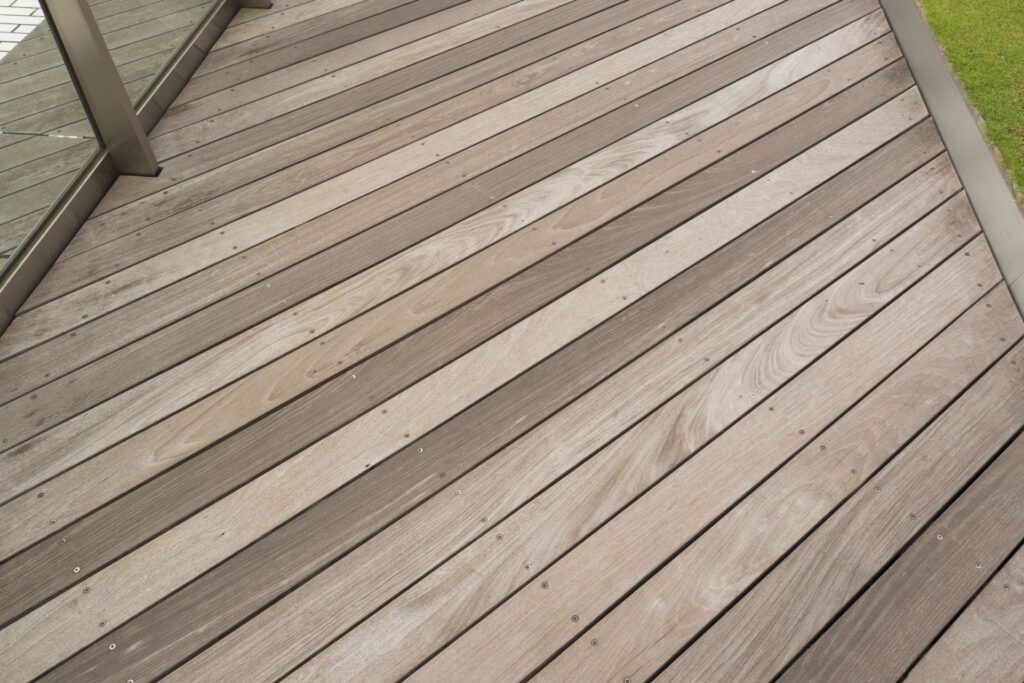
Installation Costs For Composite Decking
When it comes to enhancing outdoor living spaces, composite decking is a popular choice among homeowners due to its durability and low maintenance. However, before embarking on this home improvement project, it’s crucial to understand the financial aspects involved, particularly the installation costs. This detailed guide will break down the installation versus material costs and compare the implications of DIY versus professional installation methods.
Breakdown of Installation Costs vs. Material Costs
The total cost of installing composite decking can be split into two main categories: the materials cost and the installation cost. Material costs typically include the decking boards themselves, along with other necessary components like fasteners, railings, and substructure materials. The price of these materials can vary widely depending on the brand, quality, and specific features like UV protection or additional texture.
Installation costs, on the other hand, encompass the labor expenses associated with building the deck. This can include the preparation of the site, the construction of the deck frame, laying the decking boards, and finishing touches like railing and stair installation. Labor costs can also vary significantly based on the complexity of the design and the rates charged by the contractor.
For a clearer financial perspective, material costs generally account for about 40-60% of the total project cost, while installation makes up the remaining 40-60%. This ratio can shift based on several factors, including the deck size, material choices, and the geographic location of your property.
DIY vs. Professional Installation: Cost Implications and Recommendations for Homeowners
Deciding between DIY and hiring a professional comes down to several considerations, primarily cost and expertise.
DIY Installation: Opting to install composite decking yourself can potentially save you on labor costs. However, DIY is only recommended if you have the necessary skills and tools. The advantage of DIY installation is the cost savings, which can be substantial. You only pay for materials, and possibly rental equipment, which can cut the overall cost by as much as 50% compared to hiring professionals. However, the risks include potential mistakes, which can lead to wasted materials and additional costs down the line.
Professional Installation: Hiring a professional decking contractor is more costly but comes with several benefits. Professionals bring expertise and efficiency to the project, which often translates into a quicker installation and better performance of the final product. They can also handle complex designs and overcome unexpected issues during the installation process. Most importantly, professional installation usually comes with a warranty for both materials and labor, offering peace of mind that the deck will last and perform as expected.
Recommendations for Homeowners
When deciding on the installation method for composite decking, consider the following:
Skill Level: Honestly assess your DIY skills. Composite decking installation requires accurate cutting and secure fastening to avoid future issues.
Time Commitment: DIY projects can take significantly longer than professional installations. Consider whether you have the time to dedicate to this project.
Budget: Determine your budget. If you can afford it, professional installation is a worthwhile investment for its efficiency and reliability.
Future Value: Remember that a well-installed deck can increase your home’s value. Quality of installation matters in the long run.
Investing in composite decking involves careful consideration of both materials and installation costs. Whether you choose to DIY or hire a professional, understanding these costs will help you manage your budget and expectations, leading to successful project completion. Homeowners are encouraged to weigh their skills and budget against the potential benefits and pitfalls of each installation method to make the best choice for their situation.
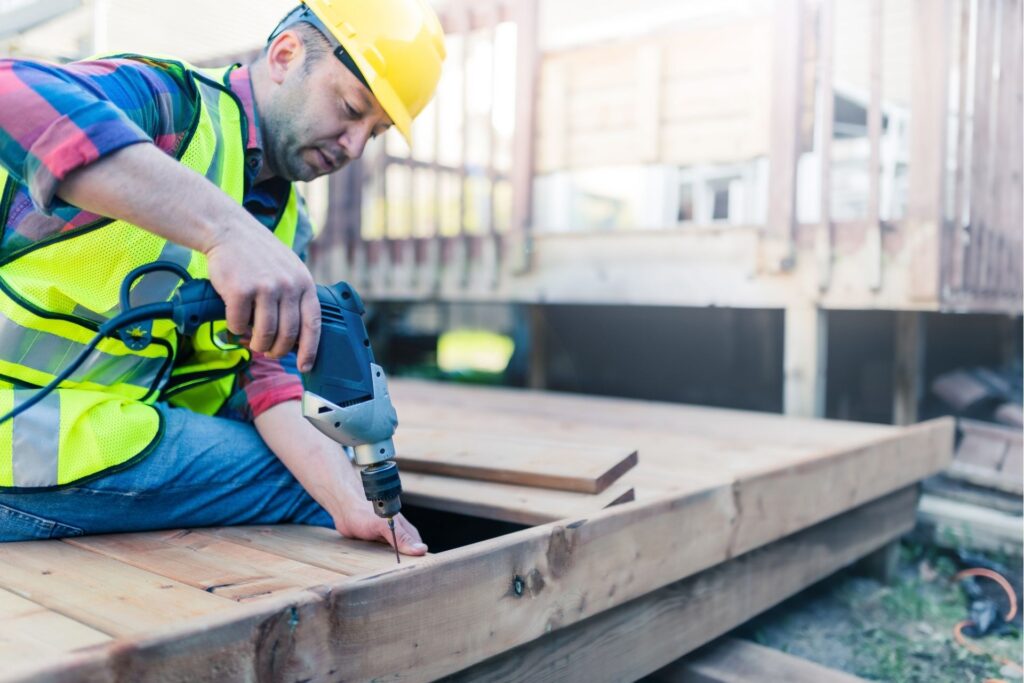
Cost Comparison: Composite Vs. Wood Decking
When planning to build or renovate a deck, homeowners often face the decision between composite and wood decking materials. Each option offers distinct advantages and drawbacks, particularly when it comes to costs. Understanding the initial and long-term financial implications can help you make an informed decision that aligns with your budget and lifestyle preferences.
Initial Costs of Composite vs. Wood Decking
Initially, composite decking tends to be more expensive than wood decking. The price difference can be attributed to the manufacturing process of composite decking, which combines wood fibers and recycled plastics to create a product that mimics the look of wood without its natural weaknesses. Prices for composite materials can vary widely, depending on the quality and the brand. On average, composite decking might cost between 20% to 50% more upfront than traditional wood options such as pressure-treated lumber or cedar.
Wood decking, on the other hand, is less expensive at the outset. It’s a popular choice for those looking to keep the initial budget low. The cost for wood decking can also vary depending on the type of wood chosen, with options like cedar and redwood generally being more costly than pressure-treated pine, but still less expensive than most composites.
Long-Term Costs: Durability and Maintenance
The long-term costs of decking materials are influenced significantly by their durability and maintenance needs. Composite decking is highly durable and resistant to fading, staining, scratching, and mold growth. It does not require the annual sanding, staining, or sealing that wood decking demands. This low-maintenance aspect makes composite decking a cost-effective option over its lifespan, despite the higher initial investment.
Wood decking, while initially cheaper, requires regular maintenance to preserve its appearance and longevity. The costs for maintenance can add up significantly over time. Wood decks need to be cleaned, stained, and sealed every one to three years, depending on the climate and the exposure to elements. Additionally, wood is susceptible to rot, insects, and weathering, which can increase repair and replacement costs over the deck’s life.
Cost-Benefit Analysis Over the Lifespan of a Deck
To quantify these considerations, let’s perform a simple cost-benefit analysis based on the typical lifespan of a deck, which is around 10 to 30 years. Assume the following:
- Composite Decking Initial Cost: $15,000
- Wood Decking Initial Cost: $10,000
- Annual Maintenance for Wood Decking: $500 (cleaning, staining, and sealing)
Over 20 years, the total cost for the composite deck remains at about $15,000 with minimal additional costs. In contrast, the wood deck, while starting at $10,000, would accrue an additional $10,000 in maintenance costs over 20 years, bringing its total to $20,000. This simple analysis does not take into account potential repair or replacement costs for wood decking, which could increase its total expense further.
While wood decking may appear to be the more budget-friendly option initially, the costs of maintenance and potential repairs can make it more expensive than composite decking in the long run. Composite decking offers a more durable and low-maintenance alternative, which can save money and time throughout the lifespan of the deck.
Deciding between composite and wood decking depends on your initial budget, how much maintenance you are willing to perform, and how long you plan to enjoy your deck. With these factors in mind, you can choose the option that best meets your needs and financial plans.
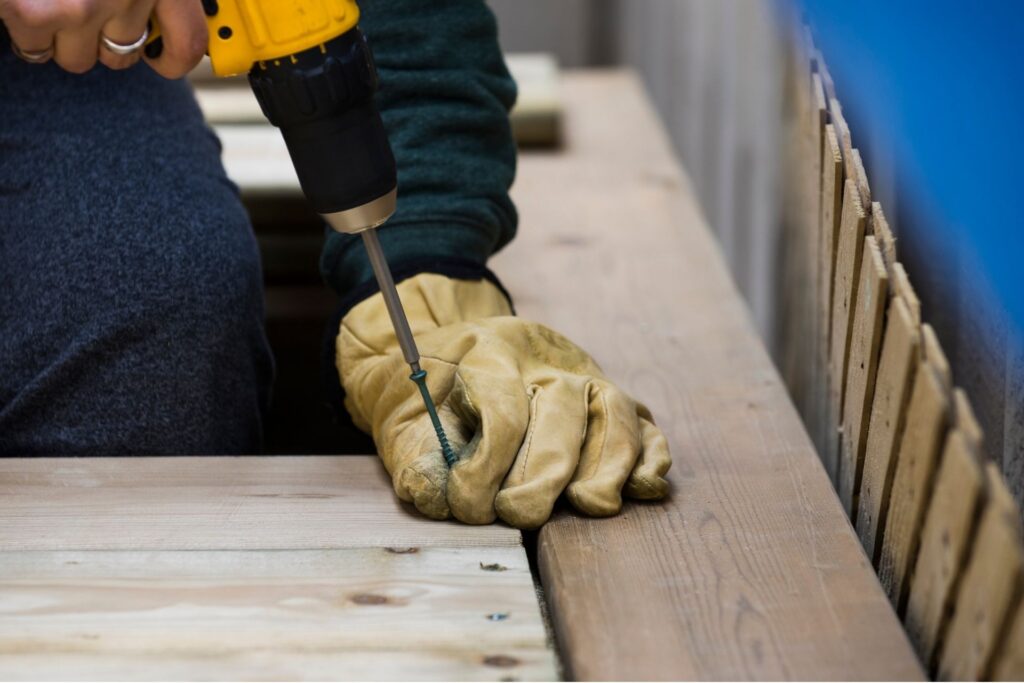
How To Choose The Right Composite Decking
Choosing the right composite decking for your home isn’t just about picking a color and style that suits your taste. It involves considering various factors that align with your lifestyle, budget, and long-term satisfaction. Here, we provide a comprehensive guide on how to select the best composite decking material that meets all your needs.
Understand Your Lifestyle Needs
Your lifestyle plays a pivotal role in choosing the right decking material. If your deck will face heavy foot traffic or frequent outdoor activities, you’ll need a durable material that withstands wear and tear. Composite decking is a popular choice because it’s designed to resist fading, staining, and scratching, which is ideal for busy households or frequent entertainers.
Consider Your Budget
Composite decking is available at various price points, and understanding your budget is crucial. It generally comes with a higher upfront cost compared to traditional wood decking. However, it’s important to consider the long-term savings it offers. Composite materials require less maintenance (no need for staining or sealing every year), which can save money over time. Determine how much you are willing to invest initially versus the potential savings in maintenance costs.
Aesthetic Preferences
Composite decking comes in a range of colors, textures, and finishes. Whether you prefer a warm classic look resembling wood or a sleek, modern aesthetic, there’s a composite material to match. When choosing the color, consider how much sunlight your deck will receive as some colors may fade slower than others under constant exposure. Additionally, some composites mimic the texture of wood with grain patterns and variations, adding to their aesthetic appeal.
Check the Warranties
One critical aspect of selecting composite decking is understanding the warranties offered. A good warranty can provide peace of mind, ensuring that your investment is protected against certain types of damage or premature wear. Look for warranties that cover issues such as fading, staining, and structural defects. The length and terms of the warranty can be indicative of the product’s quality and durability. Premium composite decking options often come with longer and more comprehensive warranties.
Choosing the right composite decking involves more than just selecting a material; it’s about making a smart investment that enhances the beauty and functionality of your outdoor living space while aligning with your financial and lifestyle goals. By considering these key factors—lifestyle needs, budget, aesthetic preferences, and warranties—you can make an informed decision that will lead to years of enjoyment and minimal upkeep.
In conclusion, carefully evaluate each of these elements to ensure that you choose the best composite decking for your home, keeping in mind that the best choice is one that balances all these factors harmoniously.
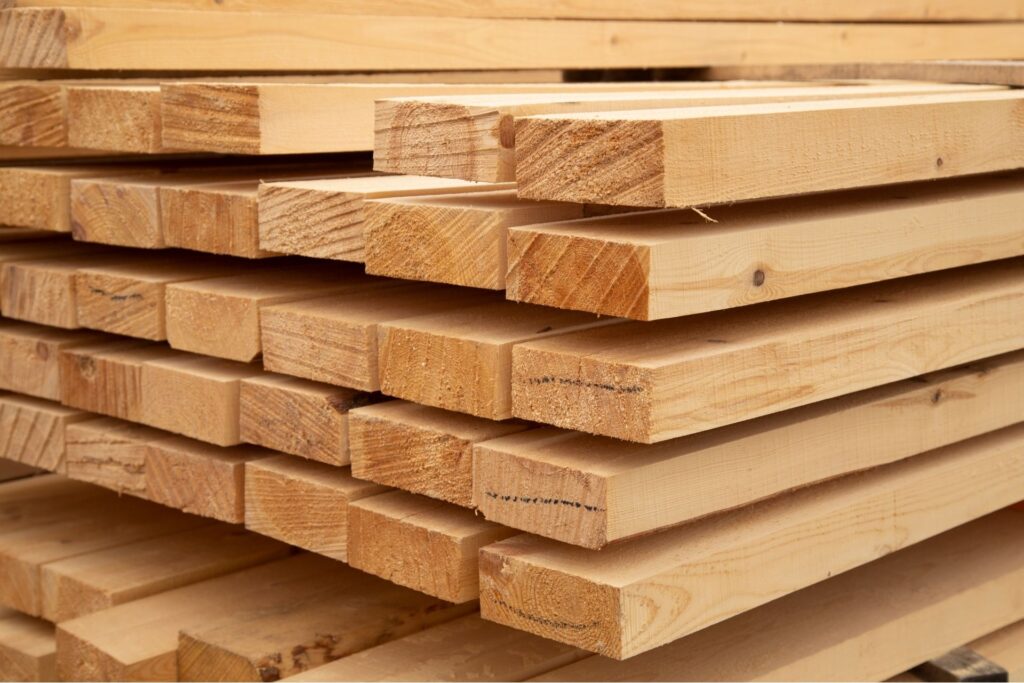
Money-Saving Tips For Buying And Installing Composite Decking
When planning to upgrade your outdoor living space with composite decking, smart financial planning can make a big difference in your project’s overall cost. Composite decking offers a durable, low-maintenance alternative to traditional wood decking, but it can be a significant investment. Here are some effective strategies to help you save money both when purchasing materials and during the installation process.
Best Times of the Year to Buy Materials
The cost of composite decking materials can fluctuate throughout the year, so timing your purchase right can lead to substantial savings. Typically, the end of the building season, which often coincides with late fall and early winter, is when many retailers offer discounts on decking materials. During this time, stores are looking to clear out inventory before the new year’s stock arrives, potentially offering lower prices.
Another opportune time to buy is during holiday sales, such as Memorial Day, Independence Day, and Black Friday, when many home improvement stores have significant sales. Planning your project around these times can help you tap into these discounts, reducing the overall cost of materials.
Recommendations on How to Save on Installation Costs
Installation costs can vary widely depending on several factors, including the complexity of your decking project and the rates of local contractors. To save on these costs, consider the following tips:
1. Do It Yourself: If you have the necessary skills and tools, self-installing your composite decking can save you a considerable amount in labor costs. Composite decking kits often come with detailed instructions, making the installation process manageable for those with moderate DIY experience.
2. Get Multiple Quotes: Always shop around and get estimates from several contractors before making a decision. This not only gives you a better sense of the going rates but also puts you in a stronger position to negotiate.
3. Choose the Right Contractor: Sometimes, the cheapest quote might not offer the best value. Choose a contractor with good reviews and a solid portfolio of completed decks. A well-installed deck can save you money on maintenance and potential repairs down the line.
Potential Discounts Through Bulk Purchases or Contractor Connections
Buying in bulk often results in lower prices per unit, which is true for composite decking materials as well. If you’re building a large deck or multiple decks (perhaps you’re a contractor, or you’re coordinating with neighbors), purchasing your materials in bulk can lead to significant savings.
Furthermore, some contractors have established relationships with suppliers and can get materials at a discount. Hiring a contractor who can leverage these connections might offer a dual benefit of professional installation and reduced material costs.
By strategically planning your purchase timing, considering a DIY approach, and exploring contractor connections for better material prices, you can significantly reduce the cost of your composite decking project. With these tips, your dream deck becomes a more affordable reality, adding value and enjoyment to your home without breaking the bank.
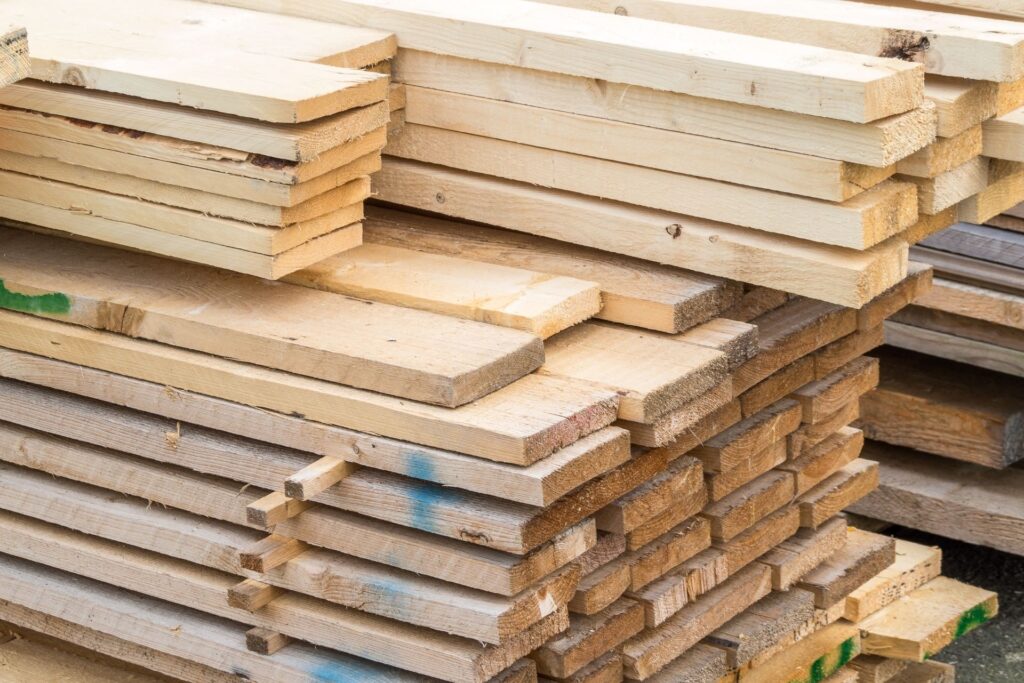
Future Trends In Composite Decking Prices
As homeowners increasingly seek sustainable and long-lasting alternatives for their outdoor spaces, composite decking has surged in popularity. This robust material, known for its durability and low maintenance, may experience price fluctuations influenced by several key market trends. Understanding these trends is essential for consumers and industry professionals planning future projects or investments.
Impact of Raw Material Costs
The cost of raw materials is a primary driver of composite decking prices. Composite decking is typically made from a blend of wood fibers and recycled plastics. Therefore, the prices of these core components directly affect the overall cost of decking materials. A rise in the cost of petroleum, for instance, can increase the price of plastic, while higher timber costs can affect the wood fiber component.
Global economic conditions, trade policies, and environmental regulations can also impact the availability and cost of these raw materials. For example, stricter environmental laws might limit wood harvesting, reducing supply and driving up prices. Conversely, improvements in recycling technology might make plastic more affordable, potentially lowering costs.
Technological Advancements in Manufacturing
Technological innovations can significantly influence the production costs and quality of composite decking. Advances in manufacturing technology can lead to more efficient production processes, reducing waste and lowering the cost of production. For instance, the development of better extrusion techniques (the process used to form the decking material) can enhance the texture and color consistency of composite decking, making it more attractive to consumers while reducing material waste.
Moreover, as manufacturers invest in new technologies, such as automation and artificial intelligence, production facilities can become more efficient. These advancements not only optimize production speeds but also improve product quality and durability, which can be a selling point even if they do not immediately reduce consumer costs.
Future Market Trends and Consumer Demand
The demand for eco-friendly and sustainable building materials continues to grow, which could spur further innovation and adoption of composite decking. As awareness of environmental issues increases, consumers are likely to prefer materials that are not only durable and low-maintenance but also environmentally responsible. This trend can drive more research and development in the sector, potentially introducing more advanced, sustainable materials to the market.
Additionally, aesthetic preferences and customization options are evolving. Consumers seek a wide variety of color and texture choices in their decking materials, pushing manufacturers to innovate in product design and variety. This diversification, however, might increase production costs, which could be passed on to the consumer.
The future of composite decking prices is poised to be shaped by a complex interplay of factors including raw material costs, technological advancements, and shifting consumer preferences. While technological improvements may lower production costs, changes in raw material prices and increased demand for sustainable products could drive prices upward. Staying informed about these trends is crucial for anyone involved in home improvement or construction, ensuring that decisions are made with a clear understanding of market dynamics.
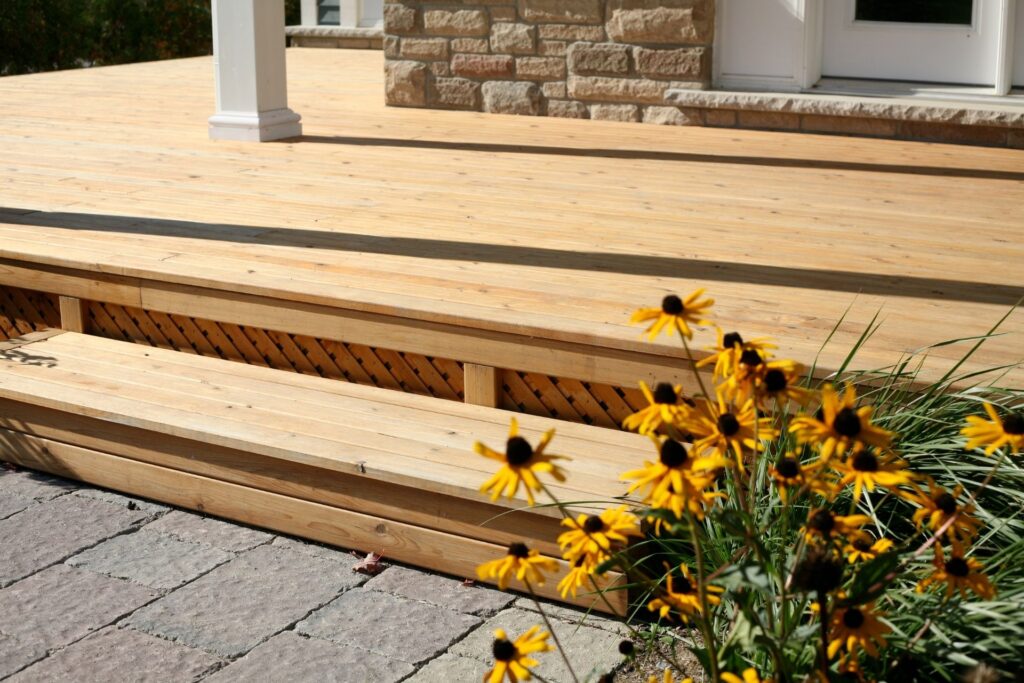
FAQs: About Composite Decking Prices Australia
Conclusion
When selecting composite decking for your home, it’s crucial to balance both the immediate and extended costs to ensure a wise investment. Composite decking, though potentially higher in upfront costs, offers substantial long-term savings due to its durability and low maintenance needs. Besides considering the financial aspect, it’s also important to reflect on the aesthetic and functional advantages that composite decking brings to your outdoor spaces. These benefits often justify the initial expense, enhancing the enjoyment and usability of your home. To make the most informed decision, we encourage you to consult with a decking professional or visit a local supplier. They can provide tailored advice and insights, helping you to choose the best decking solution that aligns with your specific needs and preferences.
About the Author:
Mike Veail is a recognized digital marketing expert with over 6 years of experience in helping tradespeople and small businesses thrive online. A former quantity surveyor, Mike combines deep industry knowledge with hands-on expertise in SEO and Google Ads. His marketing strategies are tailored to the specific needs of the trades sector, helping businesses increase visibility and generate more leads through proven, ethical methods.
Mike has successfully partnered with numerous companies, establishing a track record of delivering measurable results. His work has been featured across various platforms that showcase his expertise in lead generation and online marketing for the trades sector.
Learn more about Mike's experience and services at https://theleadguy.online or follow him on social media:

